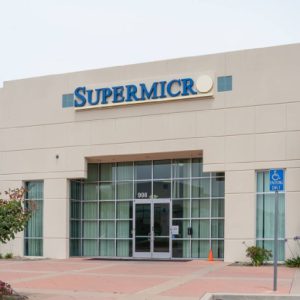
In computing and enterprise technology, virtualisation is technology that enables the creation of IT services using various resources that work together to particularly form hardware.
Virtualisation can be applied to applications, servers, storage and networks which can helpto reduce IT expenses while also boosting efficiency, agility and scalability for enterprises of all sizes.
Virtualisation uses software to simulate the existence of hardware and create virtual computer systems, which allows businesses to run multiple virtual systems and various operating systems and applications on a single server.
There are many vendors that are known for delivering efficient virtualisation software solutions in the industry, CBR lists the top five vendors in the industry today.
VMware
As a well-recognised leader in virtualisation software delivery, many data centres across the world have implemented VMware software in the form of Virtual Machines and IT environments.
Read more: Containers vs Virtualisation: Red Hat, Docker & AWS take on VMware, Microsoft & Oracle

VMware delivers different types of virtualisation such as Server Virtualisation, Network Virtualisation and Desktop Virtualisation. However, it is particularly known for its dominating position in the Server Virtualisation market in which it addresses the issues by enabling multiple operating systems to run on a single physical server as Virtual Machines.
An example of its offerings includes a Network Functions Virtualisation (NFV) platform known as vCloud, which provides compute, storage, networking, management and operations capabilities.
The platform includes vSphere, vSAN, NSX, vCloud Director, VMware Integrated OpenStack, vRealise Operations and vRealise Log Insight which are all put together for Communications Service Providers.
Another one of its products is VMware Server which is a free Windows and Linux application server to deliver an introductory experience to server virtualisation for businesses.
Microsoft
Another big industry name which has risen to a high position in virtualisation is Microsoft. The company developed its own non-Linux hypervisor, Hyper-V, which competes with VMware.

The Hyper-V platform was Microsoft’s first tool to provide everything needed to support server virtualisation as an integral feature of the operating system.
Its Cloud platform can also be converted to VMware for many benefits such as a cloud strategy that works to support all existing cloud application workloads, in order to solve more issues other than infrastructure issues and also work towards delivering a long-term business strategy.
The virtualisation offering also develops an outlook for enterprises which aim to leverage the company’s Azure cloud services and also those that may be particularly interested in managing both on-premises Hyper-V and Azure services.
What do Red Hat & Oracle offer?
Citrix
Citrix offers an optimised server virtualisation for all data centre workloads, enabling providers to tackle IT challenges in the modern data centre business.
This is done with its XenServer platform which handles virtualisation management for application optimisation, desktop and server virtualisation infrastructures.
XenServer includes enterprise-class features that are built-in to handle different workload types, a variation of mixed operating systems as well as storage or networking configurations.
 The company also offers Secure Application and Desktop Virtualisation which enables users to deliver secure virtual apps and desktops. The idea is to give employees the ability to work from anywhere while cutting IT costs as they deliver Windows, Linux, Web and SaaS applications or full virtual desktops on any device.
The company also offers Secure Application and Desktop Virtualisation which enables users to deliver secure virtual apps and desktops. The idea is to give employees the ability to work from anywhere while cutting IT costs as they deliver Windows, Linux, Web and SaaS applications or full virtual desktops on any device.
XenApp, which is the secure application virtualisation solution, enables users to gain access to virtual apps, desktops and data across all devices, whilst XenDesktop offers the same service as XenApp as well as the option to implement a scalable Virtual Desktop Infrastructure (VDI) solution.
Red Hat
Red Hat Virtualisation is offered by the developers of its Enterprise Linux.
One of the main benefits of Red Hat virtualisation tools and software is that they are developed on an open, cross-platform that combines high-performance and security.
 The use virtualisation has allowed IT to run faster and provided IT with capabilities that are not available with physical servers.
The use virtualisation has allowed IT to run faster and provided IT with capabilities that are not available with physical servers.
Red Hat’s technology is built on Kernel-based Virtual Machine (KVM) technologies, enabling customers to virtualise both traditional and cloud-native applications across their enterprise.
Its Virtualisation platform was recognised by Gartner as a visionary for virtualisation infrastructure.
Oracle
Oracle’s virtualisation tools and software have been engineered for Open Cloud infrastructure, with the inclusion of Open standards-based virtualisation, Server virtualisation and Desktop virtualisation. Note: This does not necessarily mean that they are available via open source.
 All of which enable workload portability with Docker and containers, it also includes a supported path to OpenStack.
All of which enable workload portability with Docker and containers, it also includes a supported path to OpenStack.
For Server virtualisation, products are designed to support x86 and SPARC architectures, as well as a variety of workloads such as Oracle Linux, Windows and Oracle Solaris.
The Desktop virtualisation products provide access for standard PC’s, Mac, Chromebook, Smartphones and tablets.
Also, Oracle’s VM VirtualBox provides desktop virtualisation for everyone on x86 operating system and provides support to run Oracle Linux, Windows and Oracle Solaris.






